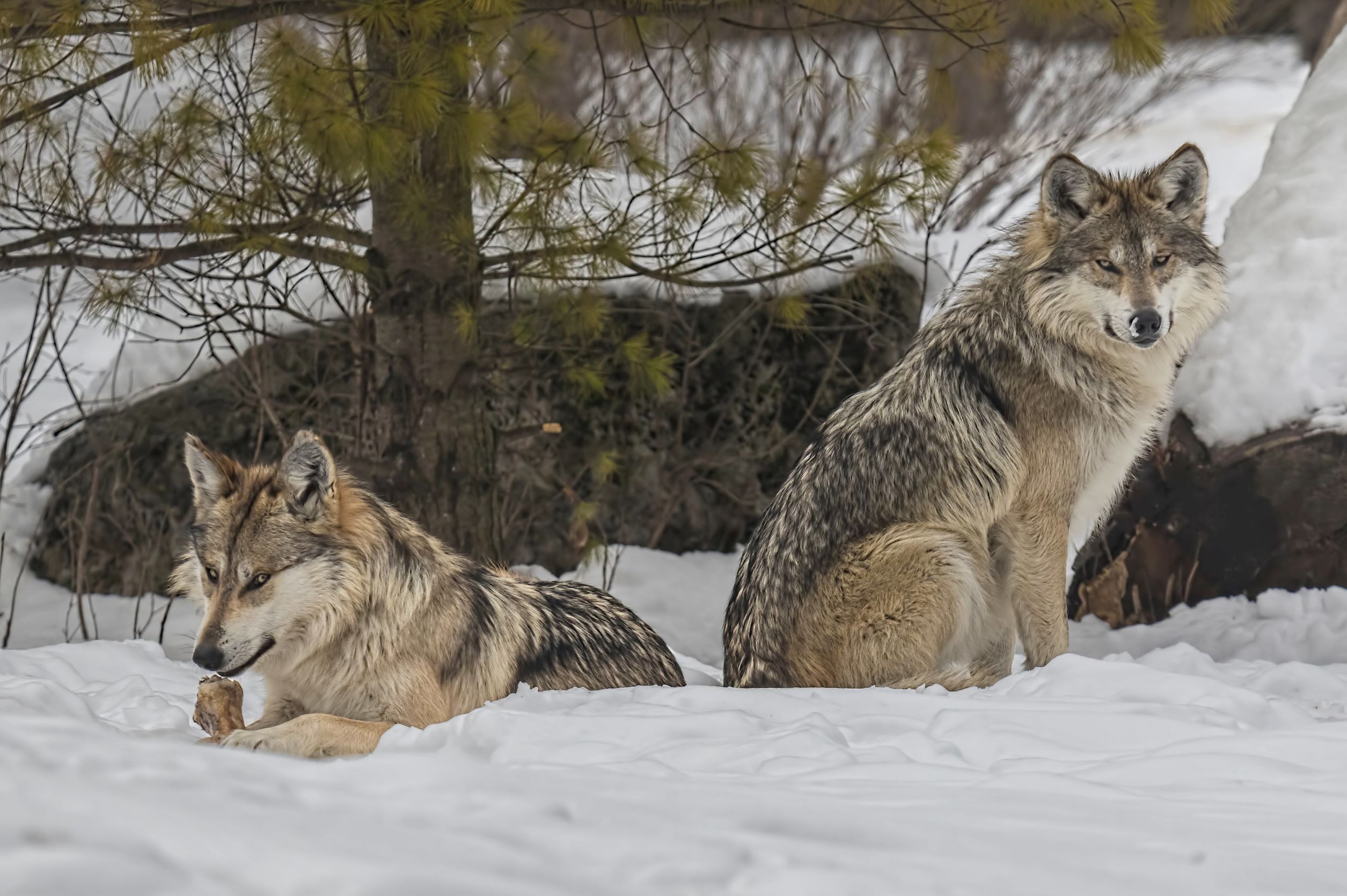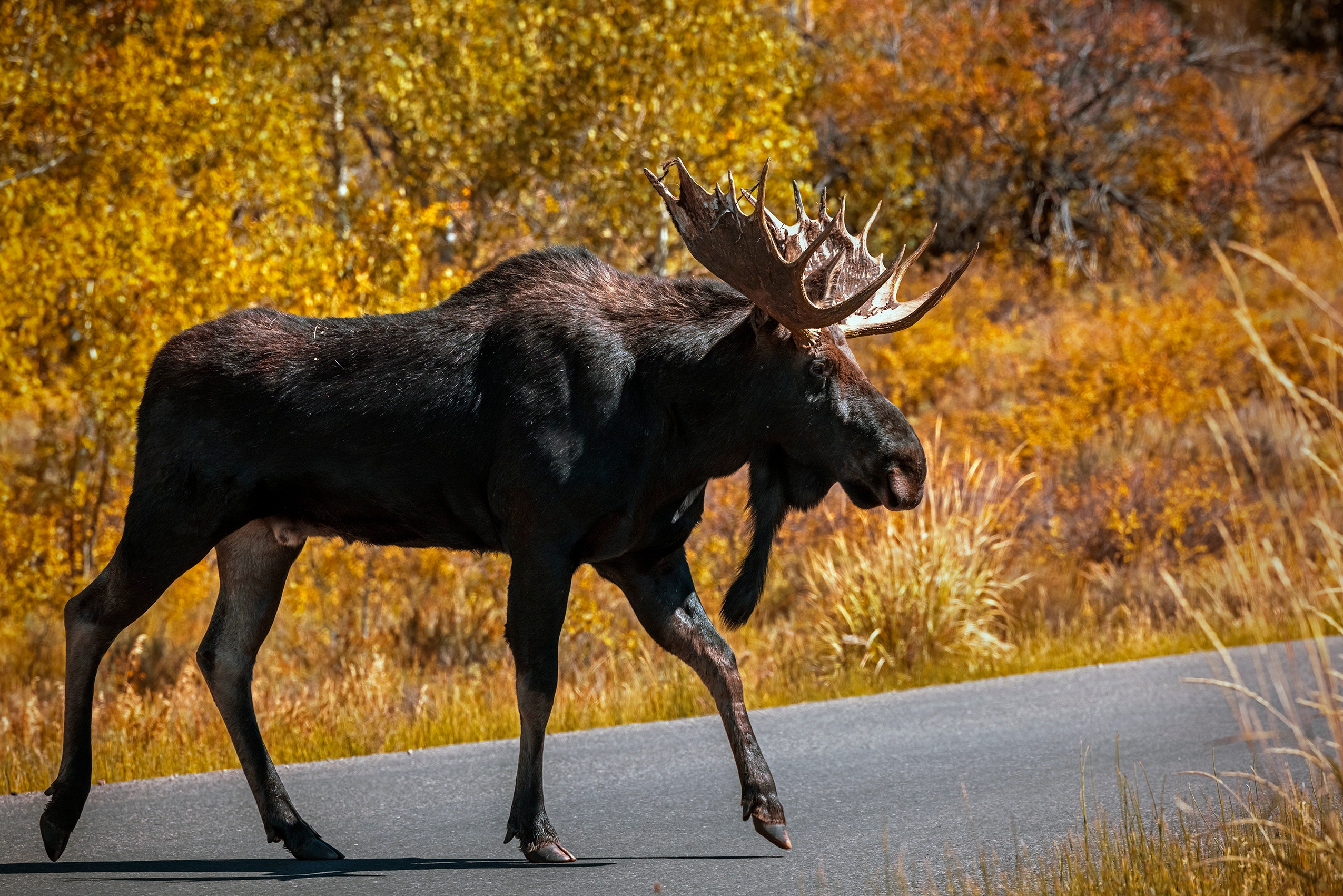In early January, officials confirmed that an endangered Mexican gray wolf was found dead in Northern Arizona. Later, the U.S. Fish and Wildlife Service issued a reward for tips leading to an arrest as it investigates the case.
An unknown poacher shot and killed a Mexican gray wolf on Jan. 2, violating the Endangered Species Act. Now, the U.S. Fish and Wildlife Service (USFWS) is offering a $10,000 reward for information leading to the individual’s arrest.
The individual illegally shot it on national forest land outside Flagstaff, Ariz.
The Mexican gray wolf is a subspecies of gray wolves native to the Southwest region of the U.S. The species roamed the region from Northern Mexico to Colorado until the 1900s, when settlement brought conflict with ranchers and livestock. It’s the smallest of all gray wolves.
It’s a contentious animal in the region. And wildlife officials, ranchers, and environmentalists regularly argue over its reintroduction. The recently killed male wolf roamed an area of several hundred miles outside Flagstaff. He was known as “Anubis” in local circles.
“It’s tragic that Anubis was killed, and many of us are grieving his loss,” Greta Anderson, deputy director of the Western Watersheds Project, said in a statement.
“But despite this heinous crime, it is also profound confirmation that Northern Arizona should be part of the wolf recovery effort.”
The statement also verified that the endangered wolf was wearing a bright pink collar when it was shot — diminishing the likelihood of an accidental kill.
The Contentious Existence of Mexican Gray Wolves in Northern Arizona
In August, Arizona wildlife officials relocated the wolf to a federally designated recovery area 200 miles southwest of the city. But by October, it had returned to the Flagstaff area. It died in the 1.6-million-acre Kaibab National Forest, which has an eastern border about 10 miles west of Flagstaff.
Per the Associated Press, environmentalists say the endangered wolves belong in habitats like the Kaibab and Coconino national forests. Ranchers in rural communities, on the other hand, take issue with the endangered wolves preying on livestock.
Livestock holders in the region say they have tried to keep Mexican gray wolves away from their property through a variety of nonlethal methods. But they’re not always successful.
The Flagstaff area’s wolf recovery zone has a northern border along U.S. Highway 40. Under a 2017 recovery plan, the FWS directs the Arizona Game and Fish Department to capture and release any wolf that ventures outside it.
The FWS is currently reviewing the area’s boundaries amid lawsuits from environmental groups. A public comment period closes on Jan. 27.
Consequences of Violating the Endangered Species Act: Reward and Tip Information
Mexican gray wolves hit the endangered species list in 1976. Their population started to grow in Arizona and New Mexico in 1998, when wildlife officials started a reintroduction program. The most recent census found about 186 Mexican gray wolves throughout the two states.

Violating the Endangered Species Act can result in penalties of up to $50,000, and/or up to one year in jail, plus a potential civil fine of up to $25,000.
The total reward purse for information that leads to a conviction in the Anubis investigation could approach $50,000. In addition to the FWS’ $10,000 arrest reward, New Mexico and Arizona authorities offer a $1,000 conviction reward each.
And the Western Watersheds Project says conservation organizations and private individuals have pledged $37,000 for “information leading to the conviction of anyone who kills an endangered wolf.”
Anyone with relevant information should call 1-844-FWS-TIPS (397-8477) or email fws_tips@fws.gov. For information on additional rewards, refer to the Western Watersheds Project statement.








